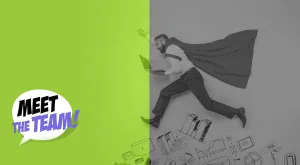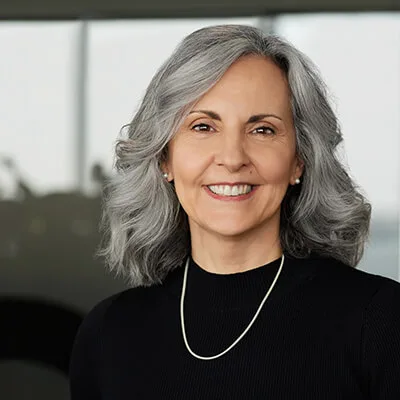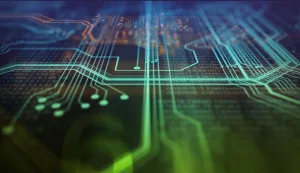
The team at Orthogone includes people with varied backgrounds and specialties. Olivier Allaire (software developer) joined the team in 2019 with experience developing firmware for car radio interfaces and automation systems for vertical farms.

“If you want to broaden your technical knowledge, Orthogone is the perfect company. The diversity of projects we work on provides the opportunity to master wildly different technologies. “
In this Q&A session, Olivier Allaire (software developer) shares what people frequently misunderstand about embedded systems, and how being on a victorious SONIA autonomous submarine team in university continues to influence the work he does today.
Olivier Allaire
Software Developer,
Orthogone Technologies
A: SONIA is an autonomous submarine I worked on for 4 years while studying electrical engineering at École de technologie supérieure (ÉTS); I eventually took the role of electronics team leader. The first year I competed with the team we placed 10th, then we reached 4th, and in my fourth year we were ranked 1st.
When we went from 10th to 1st, we realized that if we want to do something and we put our minds to it, we can we can achieve things that previously we didn’t think would be possible. That’s something that’s been reinforced throughout the years. If a team is presented with a challenge and they put their heads to it, then there’s always a way to solve it and get to the finish line. The experiences and relationships I developed during those four years working on SONIA had a hand in all the future jobs I would take. I’m still friends with the core team.
A: People from the industry often assume we work with archaic techniques and tools because the hardware we are given is limited. But it’s actually the opposite. It’s true that we work on resource constrained systems. But we use modern software techniques and tools to squeeze every last bit of performance out of these systems. The sophisticated tools we have now make it fun to work with these systems and test their capabilities. You do need some knowledge to work with it, but the barrier of entry to using these systems isn’t as high as many people think.
The term embedded often confuses people outside of the industry. I frequently explain that a lot of systems and parts have a processor in them executing code for a very narrow and specific goal. When the smartphone came into existence, it blurred the line on what an embedded system is. Because it has a processor, it has a limited set of capabilities, but people had more access to tell it what to do and customize what it does.
People are often surprised at how many items include processors. But at the end of the day, I see this as a success. If I do my job well, embedded systems are meant to simplify complex systems to a point where the user forgets about the complexity altogether.
Learn more about software development at Orthogone
A: With embedded systems you have to deal with a very limited set of resources, and you’re expected to do a lot with these limited resources. You often have to be creative about how you use them to achieve your goals. You constantly have to question your assumptions about what is required to accomplish a task. When that questioning leads you to shift your perspective in the correct way, this is when we get to innovate.
Often, we’ll play around with existing solutions that aren’t resource constrained; we’ll test the boundaries to see what it does when we poke it this way, or when we pull it that way. This testing gives us an idea of the limits. Then we ask, does it have to do it this way? What happens if we forgo this part or we leave that part aside? We’ll test the existing systems to see how they react, and then we’ll amputate parts and see how well they survive each amputation and see if we can run with that. So basically, you tear stuff apart and see how you can put it back together in a way that nobody ever did before.
Innovation happens when you need to adapt something to become something that’s not existing. Sometimes you can adapt an algorithm that was never meant to run on some specific hardware by sacrificing some parts of that algorithm or using some novel technology that nobody ever envisioned working the way you’re using it.
A: The diversity of projects keeps the work challenges fresh and exciting. We get challenges that nobody ever saw inside the company. But we all have a background of overcoming challenges that we had no idea or no roadmap for, and ending up in a successful place. Since our projects are multidisciplinary, we work as a team and trust each other to meet in the middle and find the best solution, something that not only works, but that’s elegant, looks good and works well.
Orthogone is also very supportive of training and education. I’m working on my master’s degree, and the company leaders helped me develop the idea that I’m using for my master’s thesis. The company is also accommodating my time needs to do work-study right now. As far as career path, a small company isn’t a place to climb a ladder, but if you want to broaden your technical knowledge, Orthogone is the perfect company. The diversity of projects we work on provides the opportunity to master wildly different technologies.



